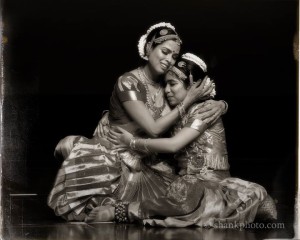 The San Francisco Bay Area is rich in artists devoted to classical Indian dance forms. There are performances throughout the year, especially in Bharatanatyam, yet, the concert, Mother & Child, performed by Usha Srinivasan and her daughter, Urmila Vudali, Aug. 24, 2014, De Anza College, Cupertino, stands out. They danced a full, classical program from the opening invocation Pushpanjali to an exuberant concluding Thillana. Clarity of movement and communication of deep emotions characterized the performance. It was beautiful and very moving. Themes of motherhood and a child’s relationship to her mother were
The San Francisco Bay Area is rich in artists devoted to classical Indian dance forms. There are performances throughout the year, especially in Bharatanatyam, yet, the concert, Mother & Child, performed by Usha Srinivasan and her daughter, Urmila Vudali, Aug. 24, 2014, De Anza College, Cupertino, stands out. They danced a full, classical program from the opening invocation Pushpanjali to an exuberant concluding Thillana. Clarity of movement and communication of deep emotions characterized the performance. It was beautiful and very moving. Themes of motherhood and a child’s relationship to her mother were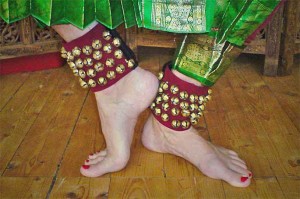 expressed through stories of Krishna, Parvati, Ganesha, and others from the human realm. For example, in a Padam selection which called upon the performers’ dramatic skills, a mother questions her daughter’s choice of a boy friend. He has wild hair and his outfit is hardly Brooks Brothers. The daughter has fallen in love with Shiva. That match is far beyond exceptional, but the situation is universal in human families. The Varnum selection was a major effort combining three aspects of Bharatanatyam: Nritta, pure dance (abstract rhythmic movements), Nritya, expressive dance, and Natya, dramatic art. It was a premiere work drawing from an array of religious/mythological stories. It demanded focus and energy from the dancers, and they were more than equal to the challenge. In fact, Ms Srinivasan’s solo piece called out such emotional connection that this viewer felt tears come to her eyes. The program included musical compositions by M.S. Sukhi for the delightful Pushpanjali, the Varnum, Amba Stuthi, and the extraordinary Thillana. The music added extra perceptions to the event. Amba Stuthi was “an ode to Mother Amba, Goddess Parvati, consort of Lord Shiva.” The folk melody, Madu Meikkum Kanne, added texture to this well-rounded performance. The musicians, seated onstage in the traditional way, were outstanding: Sri Murali Parthasarathy(vocal), N. Veeramani(violin), M.S. Sukhi(mridangam), Navia Natarajan Menon(nattuvangam and also a dance guru to the artists). The joy obviously shared by this mother and child enveloped the audience. Eleven year old Ms Vudali has studied Bharatanatyam for five years. She danced with energy and precision. One must wonder where she goes from here as her dancing is already well formed artistry. Ms Srinivasan studied Bharatanatyam with her daughter. She proclaims herself an amateur. Being an amateur means she is a lover of this multi-layered, heart shaking art. So much of the dance, music, lyrics is devotional. It is appropriate: this was a performance suffused with love.
expressed through stories of Krishna, Parvati, Ganesha, and others from the human realm. For example, in a Padam selection which called upon the performers’ dramatic skills, a mother questions her daughter’s choice of a boy friend. He has wild hair and his outfit is hardly Brooks Brothers. The daughter has fallen in love with Shiva. That match is far beyond exceptional, but the situation is universal in human families. The Varnum selection was a major effort combining three aspects of Bharatanatyam: Nritta, pure dance (abstract rhythmic movements), Nritya, expressive dance, and Natya, dramatic art. It was a premiere work drawing from an array of religious/mythological stories. It demanded focus and energy from the dancers, and they were more than equal to the challenge. In fact, Ms Srinivasan’s solo piece called out such emotional connection that this viewer felt tears come to her eyes. The program included musical compositions by M.S. Sukhi for the delightful Pushpanjali, the Varnum, Amba Stuthi, and the extraordinary Thillana. The music added extra perceptions to the event. Amba Stuthi was “an ode to Mother Amba, Goddess Parvati, consort of Lord Shiva.” The folk melody, Madu Meikkum Kanne, added texture to this well-rounded performance. The musicians, seated onstage in the traditional way, were outstanding: Sri Murali Parthasarathy(vocal), N. Veeramani(violin), M.S. Sukhi(mridangam), Navia Natarajan Menon(nattuvangam and also a dance guru to the artists). The joy obviously shared by this mother and child enveloped the audience. Eleven year old Ms Vudali has studied Bharatanatyam for five years. She danced with energy and precision. One must wonder where she goes from here as her dancing is already well formed artistry. Ms Srinivasan studied Bharatanatyam with her daughter. She proclaims herself an amateur. Being an amateur means she is a lover of this multi-layered, heart shaking art. So much of the dance, music, lyrics is devotional. It is appropriate: this was a performance suffused with love. Photos: Usha Srinivasan & Urmila Vudali, top & below, courtesy Ms Srinivasan; dancer’s ankle bells, file photo.
Photos: Usha Srinivasan & Urmila Vudali, top & below, courtesy Ms Srinivasan; dancer’s ankle bells, file photo.
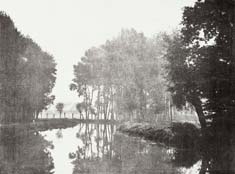
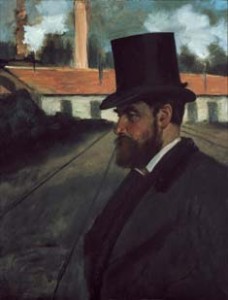
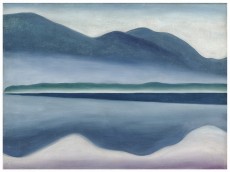
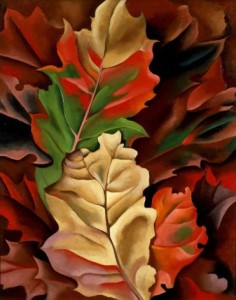

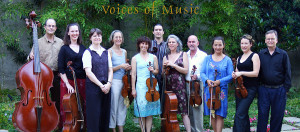
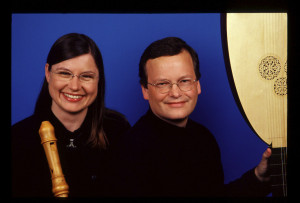

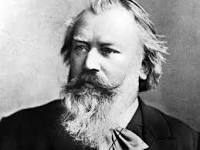


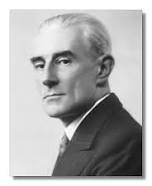
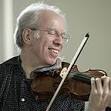
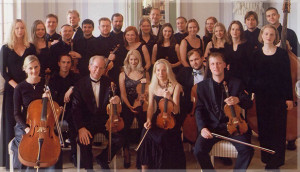
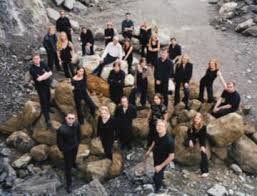
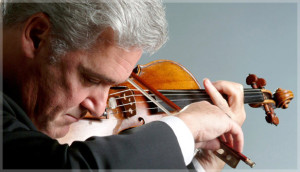
 The headline tells it all; the writer will elaborate briefly for readers who have not heard Pinchas Zukerman play or who wonder about Beethoven and the violin. However, the available superlatives all fall away in remembering this musical experience. On January 26, 2014, Pinchas Zukerman was both the conductor and the solo violinist for London’s Royal Philharmonic performing three works by Beethoven: Overture to The Creatures of Prometheus; Violin Concerto in D maj; Symphony No. 5. One could say it was a celestial experience if it were not that Beethoven insists upon being an earthling. The music rips right into whatever it means to be human, the myriad things it means to be human, and celebrates life here on earth. The people wanting to build that foul pipeline of tar sands oil across American lands could never have heard Beethoven. Oddly enough, Beethoven’s music somehow encompasses even them. Mr. Zukerman’s low key approach to conducting is deceptive. Those who have witnessed famous adults and highly skilled ten year olds dramatically waving their violin bows in order to tell their audience when they are playing something important and when they are ready for an ovation might find the absence of dramatics disappointing, but his style allows the music to be the only focal point. Mr. Zukerman’s playing is masterful, a joy. In the lengthy concerto it ranged from exquisite simplicity to complex, virtuosic performance that left one breathless. The concerto’s last movement is a delightful dance. The theme sounds like fun, but it is able to be playful because it dances on top of such musical complexity and Beethovenian energy. One moment in Mr. Zukerman’s performance particularly revealed how thoroughly he lives in the music. His back to the audience, he conducted with spare movements and played. He then turned toward the audience, lifted violin to chin, bow to violin, and began to play his solo part. The time between is what fascinated me. He knew physically exactly how long he had to make that 180 turn and begin to play. No rush. Mr. Zukerman would be great at the most challenging jump rope routines. Everyone has heard the 5th Symphony or at least knows how it begins. It was the theme for the Huntley/Brinkley news decades ago. It was the Victory symphony in World War II. The problem with something that we all think we know is that we often forget to listen to it. The Royal Philharmonic and Pinchas Zukerman’s performance of Beethoven’s 5th Symphony transmitted the greatness of Beethoven’s sense of life. It is possible to hear it telling the tale of human being, alone and together. The music stretches the reach of what we want to think of as Western Civilization, of Culture with the largest Capital C, of human potential good and bad. At the end, when the clowns, chimpanzees, whales, toddlers, miners, mothers, trees, lilies, and weeds, are all in the music, exuberant with life moving in every cell, the listener is elevated to thrill in being. This listener levitated above the crowded staircase out the symphony through the traffic to find her car had been smashed and robbed. This listener, reminding herself that even that was included in the 5th Symphony, even those who want to build the pipeline, was thankful to have heard it.
The headline tells it all; the writer will elaborate briefly for readers who have not heard Pinchas Zukerman play or who wonder about Beethoven and the violin. However, the available superlatives all fall away in remembering this musical experience. On January 26, 2014, Pinchas Zukerman was both the conductor and the solo violinist for London’s Royal Philharmonic performing three works by Beethoven: Overture to The Creatures of Prometheus; Violin Concerto in D maj; Symphony No. 5. One could say it was a celestial experience if it were not that Beethoven insists upon being an earthling. The music rips right into whatever it means to be human, the myriad things it means to be human, and celebrates life here on earth. The people wanting to build that foul pipeline of tar sands oil across American lands could never have heard Beethoven. Oddly enough, Beethoven’s music somehow encompasses even them. Mr. Zukerman’s low key approach to conducting is deceptive. Those who have witnessed famous adults and highly skilled ten year olds dramatically waving their violin bows in order to tell their audience when they are playing something important and when they are ready for an ovation might find the absence of dramatics disappointing, but his style allows the music to be the only focal point. Mr. Zukerman’s playing is masterful, a joy. In the lengthy concerto it ranged from exquisite simplicity to complex, virtuosic performance that left one breathless. The concerto’s last movement is a delightful dance. The theme sounds like fun, but it is able to be playful because it dances on top of such musical complexity and Beethovenian energy. One moment in Mr. Zukerman’s performance particularly revealed how thoroughly he lives in the music. His back to the audience, he conducted with spare movements and played. He then turned toward the audience, lifted violin to chin, bow to violin, and began to play his solo part. The time between is what fascinated me. He knew physically exactly how long he had to make that 180 turn and begin to play. No rush. Mr. Zukerman would be great at the most challenging jump rope routines. Everyone has heard the 5th Symphony or at least knows how it begins. It was the theme for the Huntley/Brinkley news decades ago. It was the Victory symphony in World War II. The problem with something that we all think we know is that we often forget to listen to it. The Royal Philharmonic and Pinchas Zukerman’s performance of Beethoven’s 5th Symphony transmitted the greatness of Beethoven’s sense of life. It is possible to hear it telling the tale of human being, alone and together. The music stretches the reach of what we want to think of as Western Civilization, of Culture with the largest Capital C, of human potential good and bad. At the end, when the clowns, chimpanzees, whales, toddlers, miners, mothers, trees, lilies, and weeds, are all in the music, exuberant with life moving in every cell, the listener is elevated to thrill in being. This listener levitated above the crowded staircase out the symphony through the traffic to find her car had been smashed and robbed. This listener, reminding herself that even that was included in the 5th Symphony, even those who want to build the pipeline, was thankful to have heard it.
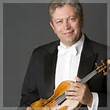
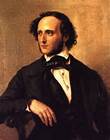
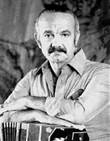
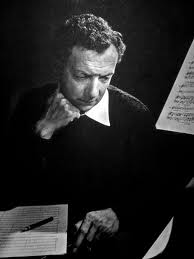


 They are like beautiful candy but without the calories! Those were the perfectly descriptive words of wisdom of Mrs. Diane B. Wilsey, Pres. of the Board of Trustees, Fine Arts Museums of San Francisco, in introducing the exhibition to the press. There was a movie star atmosphere at this press preview. Reporters for print, tv, and online outlets rushed to find seats. There were no seats. There were Very Special people in front of the room. The reporters trailed nearby hoping to understand whatever was being said whether in Italian or English or both. One or two individuals were checking out shoes in order to determine who was someone Very Special from Italy. The theory, usually sound, would be that the Very Special Italians would be wearing Very Special Italian shoes. While the chattering continued, some of the press decided to take the opportunity for just one more bite of goat cheese quiche. The Museum Director and others who had been seated rose to join the chattering class. Mrs. Wilsey had to repeat, “Good morning, Ladies and Gentlemen,” three times before the press, perhaps not used to being called with those titles, came to attention. Mrs. Wilsey recalled the time when she was a little girl living in Rome with her family and, age 11, received the gift of a Bulgari ring from her father. She wore the ring that day. The history of Bulgari (accent on the first syllable) presents a fascinating relationship to the history of European and American culture. In the early 1950s, there were those who considered it bad taste to wear yellow gold jewelry at night. Mixing colored cabochon stones was not done. Bulgari revolutionized jewelry by freeing designs from the formal restraints of platinum and white gold. Bulgari works were the favorite of international stars like Elizabeth Taylor. Her husband, Richard Burton, claimed the only word Elizabeth knew in Italian was Bulgari, that “nice little shop.” Andy Warhol considered it the most important museum of contemporary art. The design collections reflected the era of flower power, changes in hem lengths, and many threads through which art created the wider culture. Jean Christophe Baban, Bulgari director, explained that Bulgari respects the difference between luxury items and art. The master jewelers of Bulgari find ways to glorify particular stones which nature created over millions of years. He said that diamonds are an “easy way” to sell jewelry, but it takes more to use different stones and turn them into something rarer still. The exhibition includes 145 objects; two thirds of them are from Bulgari’s heritage collection. The visitor will find brilliant colors and surprising shapes in jewelry often combining precious and semi-precious stones. The design of the exhibition itself engages the eye with dramatic lighting and appropriately jewel-box like display cases. For this visitor, the watches made to resemble bejeweled serpents were a favorite. Did we misunderstand the true story of Cleopatra and the asp? When Cleo lifted the slender snake to her throat was she thinking of personal adornment, not death? Was the asp anxious to assert its own splendor as a natural jewel? Did it strike out of rivalry with the Queen’s beauty? Here we have proof that Shakespeare was not the pen name of a woman; his sister might have thought this through more carefully. See The Art of Bulgari: La Dolce Vita & Beyond, 1950-1990, at the de Young Museum, Golden Gate Park, San Francisco. It opened Sept. 21 and stays through Feb. 17, 2014. Remember: Christmas is coming! Photos at top: Snake bracelet watch in gold, enamal, rubies, Bulgari heritage collection; Bulgari bib necklace, 1965, gold with emeralds, amethysts, turquoise, & diamonds, formerly in the collection of Lyn Revson.
They are like beautiful candy but without the calories! Those were the perfectly descriptive words of wisdom of Mrs. Diane B. Wilsey, Pres. of the Board of Trustees, Fine Arts Museums of San Francisco, in introducing the exhibition to the press. There was a movie star atmosphere at this press preview. Reporters for print, tv, and online outlets rushed to find seats. There were no seats. There were Very Special people in front of the room. The reporters trailed nearby hoping to understand whatever was being said whether in Italian or English or both. One or two individuals were checking out shoes in order to determine who was someone Very Special from Italy. The theory, usually sound, would be that the Very Special Italians would be wearing Very Special Italian shoes. While the chattering continued, some of the press decided to take the opportunity for just one more bite of goat cheese quiche. The Museum Director and others who had been seated rose to join the chattering class. Mrs. Wilsey had to repeat, “Good morning, Ladies and Gentlemen,” three times before the press, perhaps not used to being called with those titles, came to attention. Mrs. Wilsey recalled the time when she was a little girl living in Rome with her family and, age 11, received the gift of a Bulgari ring from her father. She wore the ring that day. The history of Bulgari (accent on the first syllable) presents a fascinating relationship to the history of European and American culture. In the early 1950s, there were those who considered it bad taste to wear yellow gold jewelry at night. Mixing colored cabochon stones was not done. Bulgari revolutionized jewelry by freeing designs from the formal restraints of platinum and white gold. Bulgari works were the favorite of international stars like Elizabeth Taylor. Her husband, Richard Burton, claimed the only word Elizabeth knew in Italian was Bulgari, that “nice little shop.” Andy Warhol considered it the most important museum of contemporary art. The design collections reflected the era of flower power, changes in hem lengths, and many threads through which art created the wider culture. Jean Christophe Baban, Bulgari director, explained that Bulgari respects the difference between luxury items and art. The master jewelers of Bulgari find ways to glorify particular stones which nature created over millions of years. He said that diamonds are an “easy way” to sell jewelry, but it takes more to use different stones and turn them into something rarer still. The exhibition includes 145 objects; two thirds of them are from Bulgari’s heritage collection. The visitor will find brilliant colors and surprising shapes in jewelry often combining precious and semi-precious stones. The design of the exhibition itself engages the eye with dramatic lighting and appropriately jewel-box like display cases. For this visitor, the watches made to resemble bejeweled serpents were a favorite. Did we misunderstand the true story of Cleopatra and the asp? When Cleo lifted the slender snake to her throat was she thinking of personal adornment, not death? Was the asp anxious to assert its own splendor as a natural jewel? Did it strike out of rivalry with the Queen’s beauty? Here we have proof that Shakespeare was not the pen name of a woman; his sister might have thought this through more carefully. See The Art of Bulgari: La Dolce Vita & Beyond, 1950-1990, at the de Young Museum, Golden Gate Park, San Francisco. It opened Sept. 21 and stays through Feb. 17, 2014. Remember: Christmas is coming! Photos at top: Snake bracelet watch in gold, enamal, rubies, Bulgari heritage collection; Bulgari bib necklace, 1965, gold with emeralds, amethysts, turquoise, & diamonds, formerly in the collection of Lyn Revson.